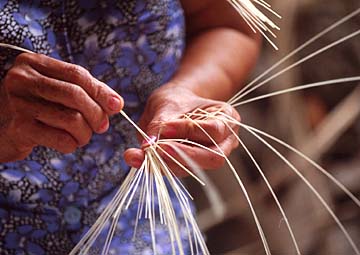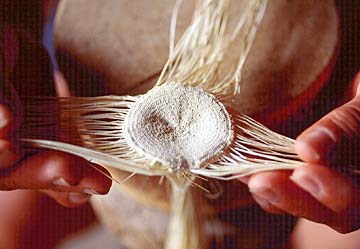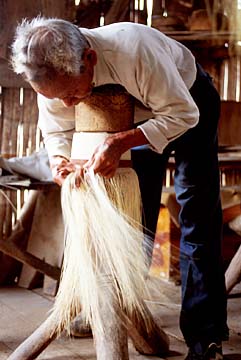

Old World artistry
Brent Black's photos show the making
of a Panama hat, from forest to nearly finished

A pajero walks among toquillo plants searching for one with an unopened central leaf shoot.

The cut shoots, or cogillos, are bundled up. They're brought to weavers to be opened and deveined, loosing individual leaflets.

In Montecristi, the leaflets are boiled for a minute or two. In other areas, the straw may be boiled for up to 30 minutes. After boiling, the straw is bleached with sulfur inside a wooden box or an oil drum.

After bleaching, the straw is hung to dry, usually under the house to protect them from damage by direct sunlight. When dry, the weaver, or tejador, begins with eight or 12 strands of straw.

The straw is woven into a circular disc called a rosetta. It forms the center of the top of the crown. Once the hat is complete, the edges will be finished and the work will be carefully pounded to soften the hat without weakening the straw.

Tejadors bend over a stand while working to ensure an even weave. A rushed job will result in larger weave toward the edge of the brim, which reduces the value of a hat.
Click for online
calendars and events.